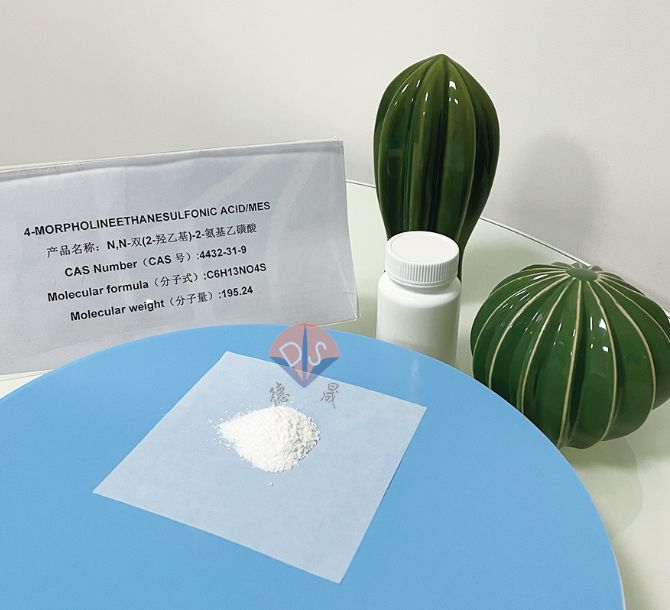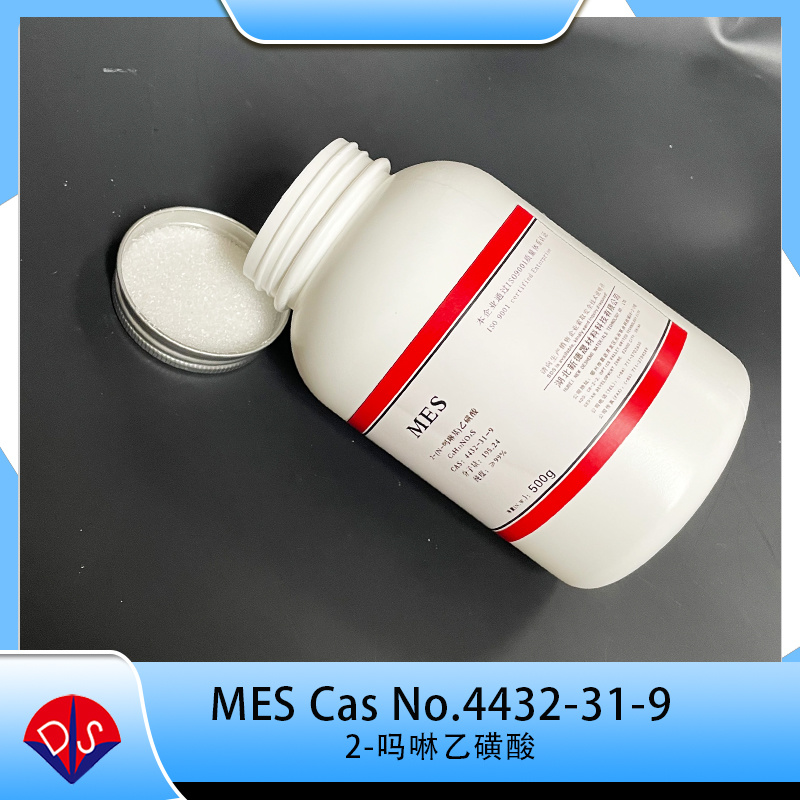The key role and application prospects of MES in capillary electrochromatography
Release time:
2025-10-16
MES (2- (N-morpholine) ethanesulfonic acid) is a widely used buffering agent in biochemistry and molecular biology, with a pH range of 5.5-6.7 and excellent buffering capacity and biocompatibility. The application of MES buffer is particularly important in capillary electrochromatography (CE), especially in reducing fragment peaks and improving the accuracy of electrophoresis results.

MES buffer
The role of MES in capillary electrochromatography
1. Reduce fragment peaks
In capillary electrochromatography (CE-SDS), protein samples may produce additional fragment peaks during heating denaturation, which can affect the accuracy of detection results. The combination of MES and SDS buffer solutions (such as 2.13g/L MES and 10g/L SDS) can effectively reduce these artificially generated fragment peaks, thereby ensuring the accuracy of electrophoresis results.
2. Optimize electrophoresis conditions
The pH range of MES buffer is 5.5-6.7, which can provide a stable pH environment for capillary electrochromatography and avoid protein denaturation or inactivation caused by pH fluctuations. In addition, MES does not form complexes with most metal ions, so it can be used as a non coordinating buffer in metal ion solutions to ensure the stability of the experiment.
3. Improve separation efficiency
In capillary electrochromatography, MES buffer can optimize separation conditions and improve protein separation efficiency by adjusting its concentration and pH value. For example, by increasing the concentration of MES, hydrophobic interactions can be enhanced, thereby improving the separation efficiency of proteins.
The specific application of MES in capillary electrochromatography
1. Protein electrophoresis
MES buffer is commonly used for protein electrophoresis analysis in capillary electrochromatography. By adjusting the concentration and pH value of MES, the separation conditions of proteins can be optimized and the separation efficiency can be improved. For example, in CE-SDS detection, the combination of MES and SDS buffer can effectively reduce fragment peaks and improve the response value of sample peaks.
2. Metal ion solution
In metal ion solutions, MES buffer can be used as a non coordinating buffer to avoid the formation of complexes with metal ions, thereby ensuring the accuracy of experiments.
3. Redox research
MES buffer does not form free radical species, making it suitable for the study of redox processes and providing a stable redox background for research.

Product packaging
Future Prospects
With the continuous development of biotechnology and analytical science, MES plays an irreplaceable role as a key buffering agent in experiments such as capillary electrochromatography. As a professional MES manufacturer, Desheng New Materials has always been committed to providing high-quality biological buffer products for scientific research and industrial users. At present, Desheng New Materials has officially launched the construction of the Huanggang new factory, and will pay more attention to technology research and development and capacity improvement in the future, further meeting the market's demand for MES products and promoting innovative development in related fields.
Contact details
Contact number
Address: C8, Guanggu United Science and Technology City, Ezhou City, Hubei Province
Fax:0711-3704 589
Follow us



